#brain-computer interface (BCI) implant
Text

#finally came to terms with myself that it (neural implants for bci) aint ever gonna happen and if it does it aint gonna be good#shitpost#meme#brain computer interface
5 notes
·
View notes
Text
Wireless Brain Chip? 🧠 Huh???
Wireless Brain Chip? 🧠 Huh???
#BrainImplantedChips #AI #Neuralink
Image Credit: geralt
Would you be willing to sign up to participate in a study to have your brain implanted with a chip so that you can keep up with artificial intelligence and communicate with your smart devices? Sounds like one of those SyFy movies gone very wrong or something from the Matrix series? Well, when I heard about this I asked that haunting question, “Why?”
It’s unfathomable to…
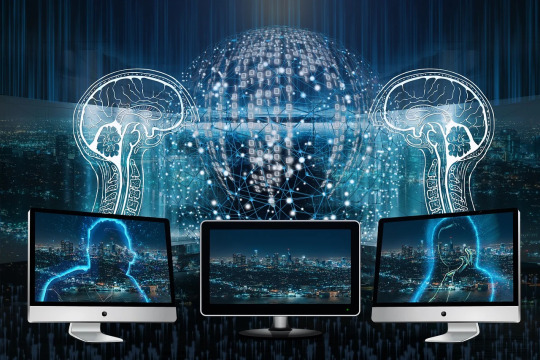
View On WordPress
#AI#Artificial Intelligence#Brain Chip Surgical Insertions#Brain Chips#Brain Computer#Brain Computer Interface-BCI#Brain Implants#Neuralink
0 notes
Text
Pioneering BCI : Journey Before Neuralink
Pioneering BCI : Journey Before Neuralink
@neosciencehub
#neosciencehub #science #neuralink #neurotechnology #neurotech #neuroscience #BrownUniversity #scientific #BCI #JohnDonoghue #braincomputer #research #BlackrockNeurotech #NSH #BrainImplants
The recent success of Neuralink in implanting a brain-computer interface (BCI) in a human brain has captured the world’s attention. However, it’s crucial to recognize that this achievement stands on the shoulders of numerous pioneering efforts in the field of neurotechnology. This article explores the significant contributions made before Neuralink that have shaped the current landscape of BCI…

View On WordPress
#BCI Breakthroughs#BCI Development#Blackrock Neurotech#Brain Implants#Brain-Computer Interface#featured#John Donoghue#Neuralink#Neurological Innovation#Neuroscientific Advancements#Neurotechnology Pioneers#Precision Neuroscience#sciencenews
0 notes
Text

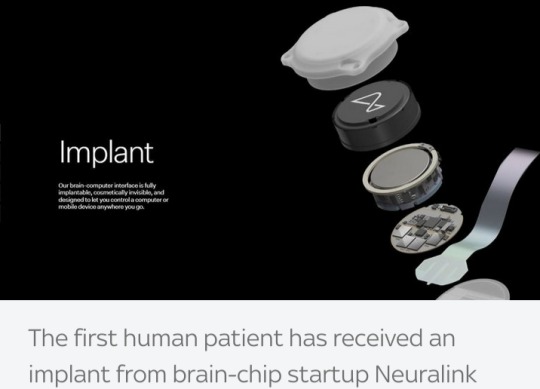


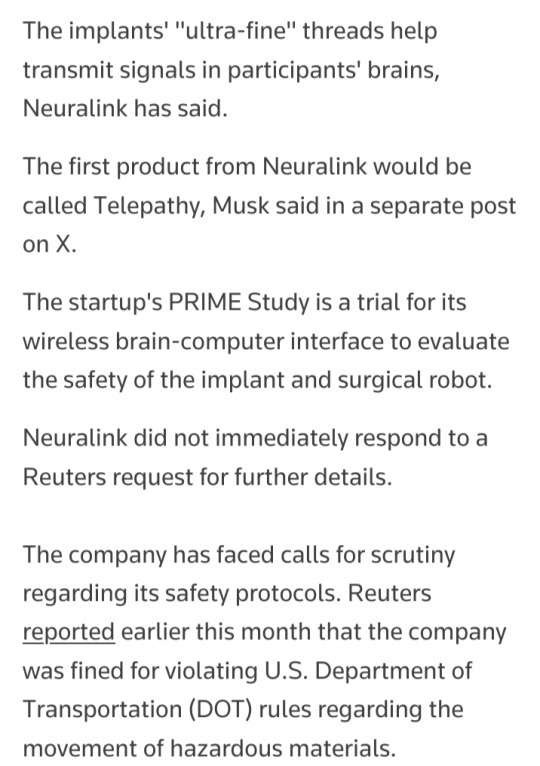

Source: Reuters
youtube
Elon Musk announces first Neuralink wireless brain chip implant in a human | BBC News
30 January 2024
Tech billionaire Elon Musk has said his company Neuralink has successfully implanted a wireless brain chip in a human for the first time.
He said initial results detected promising neuron spikes or nerve impulses and the patient is recovering well.
Posting on X, formerly known as Twitter, Mr Musk said Neuralink’s first product would be called Telepathy, and if successful, would enable "control of your phone or computer, and through them, almost any device, just by thinking."
While Mr Musk's involvement raises the profile of Neuralink, a number of rival companies have already implanted similar devices.
#Neuralink#Elon Musk#National Institute of Health#U.S. Food and Drug Administration#brain-computer interface (BCI) implant#Telepathy#PRIME Study#surgical robot#implant#neurological conditions#paralysis#brain#brain chip#technology#science#clinical trial#artificial intelligence#wireless brain chip#Youtube
1 note
·
View note
Text
[ Neuralink Wants To Put A Chip In Your Head ]
#elon musk#neuralink#brain chip implant#brain chip#prime#quadriplegia#als#bcis#n1 implant#r1 robot#FDA#animal trials#violations#animal cruelty#fight night champion#fight night champion online#precise robotically implanted brain computer interface
0 notes
Text
Blame! (2017)
A Brain Computer Interface AKA BCI is a device that translates brain signals into commands that can be executed by a computer or other machine.
As of January 26, 2024, researchers develop an implantable device that can record a collection of individual neurons over months…
----
There's a slightly different version of this... If you want to see it, here it is.
#blame!#anime edit#cyberpunk#cyberpunk anime#sci-fi#scifi#scifi movies#cyberpunk movies#hackers#scifi anime#anime#my edit#anime gif#gif
124 notes
·
View notes
Text
The invention of the basic BCI was revolutionary, though it did not seem so at the time. Developing implantable electronics that could detect impulses from, and provide feedback to, the body's motor and sensory neurons was a natural outgrowth of assistive technologies in the 21st century. The Collapse slowed the development of this technology, but did not stall it completely; the first full BCI suite capable of routing around serious spinal cord damage, and even reducing the symptoms of some kinds of brain injury, was developed in the 2070s. By the middle of the 22nd century, this technology was widely available. By the end, it was commonplace.
But we must distinguish, as more careful technologists did even then, between simpler BCI--brain-computer interfaces--and the subtler MMI, the mind-machine interface. BCI technology, especially in the form of assistive devices, was a terrific accomplishment. But the human sensory and motor systems, at least as accessed by that technology, are comparatively straightforward. Despite the name, a 22nd century BCI barely intrudes into the brain at all, with most of its physical connections being in the spine or peripheral nervous system. It does communicate *with* the brain, and it does so much faster and more reliably than normal sensory input or neuronal output, but there nevertheless still existed in that period a kind of technological barrier between more central cognitive functions, like memory, language, and attention, and the peripheral functions that the BCI was capable of augmenting or replacing.
*That* breakthrough came in the first decades of the 23rd century, again primarily from the medical field: the subarachnoid lace or neural lace, which could be grown from a seed created from the patient's own stem cells, and which found its first use in helping stroke patients recover cognitive function and suppressing seizures. The lace is a delicate web of sensors and chemical-electrical signalling terminals that spreads out over, and carefully penetrats certain parts of the brain; in its modern form, its function and design can be altered even after it is implanted. Most humans raised in an area with access to modern medical facilities have at least a diagnostic lace in place; and, in most contexts, they are regarded as little more than a medical tool.
But of course some of the scientists who developed the lace were interested in pushing the applications of the device further, and in this, they were inspired by the long history of attempts to develop immersive virtual reality that had bedevilled futurists since the 20th century. Since we have had computers capable of manipuating symbolic metaphors for space, we have dreamed of creating a virtual space we can shape to our hearts' content: worlds to escape to, in which we are freed from the tyranny of physical limitations that we labor under in this one. The earliest fiction on this subject imagined a kind of alternate dimension, which we could forsake our mundane existence for entirely, but outside of large multiplayer games that acted rather like amusement parks, the 21st century could only offer a hollow ghost of the Web, bogged down by a cumbersome 3D metaphor users could only crudely manipulate.
The BCI did little to improve the latter--for better or worse, the public Web as we created it in the 20th century is in its essential format (if not its scale) the public Web we have today, a vast library of linked documents we traverse for the most part in two dimensions. It feeds into and draws from the larger Internet, including more specialized software and communications systems that span the whole Solar System (and which, at its margins, interfaces with the Internet of other stars via slow tightbeam and packet ships), but the metaphor of physical space was always going to be insufficient for so complex and sprawling a medium.
What BCI really revolutionized was the massively multiplayer online game. By overriding sensory input and capturing motor output before it can reach the limbs, a BCI allows a player to totally inhabit a virtual world, limited only by the fidelity of the experience the software can offer. Some setups nowadays even forgo overriding the motor output, having the player instead stand in a haptic feedback enclosure where their body can be scanned in real time, with only audio and visual information being channeled through the BCI--this is a popular way to combine physical exercise and entertainment, especially in environments like space stations without a great deal of extra space.
Ultra-immersive games led directly, I argue, to the rise of the Sodalities, which were, if you recall, originally MMO guilds with persistent legal identities. They also influenced the development of the Moon, not just by inspiring the Sodalities, but by providing a channel, through virtual worlds, for socialization and competition that kept the Moon's political fragmentation from devolving into relentless zero-sum competition or war. And for most people, even for the most ardent players of these games, the BCI of the late 22nd century was sufficient. There would always be improvements in sensory fidelity to be made, and new innovations in the games themselves eagerly anticipated every few years, but it seemed, even for those who spent virtually all their waking hours in these spaces, that there was little more that could be accomplished.
But some dreamers are never satisfied; and, occasionally, such dreamers carry us forward and show us new possibilities. The Mogadishu Group began experimenting with pushing the boundaries of MMI and the ways in which MMI could augment and alter virtual spaces in the 2370s. Mare Moscoviensis Industries (the name is not a coincidence) allied with them in the 2380s to release a new kind of VR interface that was meant to revolutionize science and industry by allowing for more intuitive traversal of higher-dimensional spaces, to overcome some of the limits of three-dimensional VR. Their device, the Manifold, was a commercial disaster, with users generally reporting horrible and heretofore unimagined kinds of motion-sickness. MMI went bankrupt in 2387, and was bought by a group of former Mogadishu developers, who added to their number a handful of neuroscientists and transhumanists. They relocated to Plato City, and languished in obscurity for about twenty years.
The next anybody ever heard of the Plato Group (as they were then called), they had bought an old interplanetary freighter and headed for the Outer Solar System. They converted their freighter into a cramped-but-servicable station around Jupiter, and despite occasionally submitting papers to various neuroscience journals and MMI working groups, little was heard from them. This prompted, in 2410, a reporter from the Lunar News Service to hire a private craft to visit the Jupiter outpost; she returned four years later to describe what she found, to general astonishment.
The Plato Group had taken their name more seriously, perhaps, than anyone expected: they had come to regard the mundane, real, three-dimensional world as a second-rate illusion, as shadows on cave walls. But rather than believing there already existed a true realm of forms which they might access by reason, they aspired to create one. MMI was to be the basis, allowing them to free themselves not only of the constraints of the real world (as generations of game-players had already done), but to free themselves of the constraints imposed on those worlds by the evolutionary legacy of the structures of their mind.
They decided early on, for instance, that the human visual cortex was of little use to them. It was constrained to apprehending three-dimensional space, and the reliance of the mind on sight as a primary sense made higher-dimensional spaces difficult or impossible to navigate. Thus, their interface used visual cues only for secondary information--as weak and nondirectional a sense as smell. They focused on using the neural lace to control the firing patterns of the parts of the brain concerned with spatial perception: the place cells, neurons which periodically fire to map spaces to fractal grides of familiar places, and the grid cells, which help construct a two-dimensional sense of location. Via external manipulation, they found they could quickly accommodate these systems to much more complex spaces--not just higher dimensions, but non-Euclidean geometries, and vast hierarchies of scale from the Planck length to many times the size of the observable universe.
The goal of the Plato Group was not simply to make a virtual space to inhabit, however transcendent; into that space they mapped as much information they could, from the Web, the publicly available internet, and any other database they could access, or library that would send them scans of its collection. They reveled in the possibilities of their invented environment, creating new kinds of incomprehensible spatial and sensory art. When asked what the purpose of all this was--were they evangelists for this new mode of being, were they a new kind of Sodality, were they secessionists protesting the limits of the rest of the Solar System's imagination?--they simply replied, "We are happy."
I do not think anyone, on the Moon or elsewhere, really knew what to make of that. Perhaps it is simply that the world they inhabit, however pleasant, is so incomprehensible to us that we cannot appreciate it. Perhaps we do not want to admit there are other modes of being as real and moving to those who inhabit them as our own. Perhaps we simply have a touch of chauvanism about the mundane. If you wish to try to understand yourself, you may--unlike many other utopian endeavors, the Plato Group is still there. Their station--sometimes called the Academy by outsiders, though they simply call it "home"--has expanded considerably over the years. It hangs in the flux tube between Jupiter and Io, drawing its power from Jupiter's magnetic field, and is, I am told, quite impressive if a bit cramped. You can glimpse a little of what they have built using an ordinary BCI-based VR interface; a little more if your neural lace is up to spec. But of course to really understand, to really see their world as they see it, you must be willing to move beyond those things, to forsake--if only temporarily--the world you have been bound to for your entire life, and the shape of the mind you have thus inherited. That is perhaps quite daunting to some. But if we desire to look upon new worlds, must we not always risk that we shall be transformed?
--Tjungdiawain’s Historical Reader, 3rd edition
77 notes
·
View notes
Text
Elon Musk's Neuralink Implants First Brain Chip in Human: A Look at the Tech and the Future

Elon Musk's brain-computer interface (BCI) company, Neuralink, has taken a significant step forward with the successful implantation of its first wireless brain chip in a human patient.
This marks a major milestone in the field of neurotechnology and has sparked both excitement and debate about the potential of this technology.
What is Neuralink's Brain Chip?
The chip, currently in its early stages of development, is designed to connect the human brain directly to computers.
It uses thin, flexible threads implanted in the brain to record and transmit neural activity wirelessly.
This technology has the potential to revolutionize how we interact with the world around us, potentially allowing for mind-controlled devices, enhanced communication for those with disabilities, and even treatment for neurological conditions.
Initial Results and Future Goals:
While the initial results only show promising detection of neural activity, it's a significant first step.
Musk has stated that the first product, called "Telepathy," aims to enable control of phones, computers, and other devices using only thoughts.
He envisions this technology initially benefiting those with paralysis, allowing them to communicate and interact with the world more easily.
Challenges and Concerns:
Despite the potential benefits, Neuralink's technology faces several challenges and ethical concerns.
Safety is paramount, and the company has faced criticism regarding its animal testing practices.
Additionally, the potential for misuse and the ethical implications of directly accessing and manipulating brain activity need careful consideration.
The Race for Brain-Computer Interfaces:
Neuralink is not alone in this field. Other companies, like Blackrock Neurotech and Precision Neuroscience, are also developing similar technologies.
This race for BCI dominance could lead to rapid advancements, but it's crucial to ensure responsible development and prioritize safety and ethical considerations.

The Future of Neurotechnology:
Neuralink's first human implant is just the beginning.
As BCI technology continues to evolve, we can expect to see even more groundbreaking applications in various fields, from healthcare and communication to entertainment and gaming.
However, it's important to approach this technology with caution and ensure it's developed and used ethically and responsibly.
This blog post provides an informative overview of Neuralink's recent achievement, its potential impact, and the challenges and considerations surrounding this emerging technology.
It encourages readers to stay informed and engage in discussions about the future of neurotechnology.
Checkout More for Tech Updates
#brain chip#elon musk#elonmusk#neuralink#Human Brain Chip#srkshaju#neurotechnology#srkshazu#The Future of Neurotechnology#Neuralink's Brain Chip#technology#computing#Micro Chip#science
5 notes
·
View notes
Text
Neuralink project
Neuralink Project: A Deep Dive
Neuralink, founded by Elon Musk in 2016, is a neurotechnology company working on a revolutionary brain-computer interface (BCI) system. This system aims to bridge the gap between the human brain and computers, allowing for a new kind of interaction. Let's delve deeper into the details of this ambitious project.
Goals of Neuralink:
Medical Applications:
Restore lost abilities: The primary focus currently is on helping people with paralysis or neurological conditions like ALS regain control over their environment and communication. By deciphering brain signals, Neuralink hopes to allow users to control prosthetic limbs, wheelchairs, or computer interfaces directly with their thoughts.
Treat brain disorders: Neuralink's technology has the potential to treat various brain disorders by directly monitoring and potentially stimulating brain activity.
Human Augmentation: Beyond medical applications, Neuralink envisions a future where BCIs can enhance human capabilities. This could involve:
Direct memory access: Uploading and downloading memories or knowledge could become a reality.
Brain-to-brain communication: Imagine telepathic communication facilitated by BCIs.
Technical aspects of Neuralink:
Neuralink Device: The core of the project is a surgically implanted chip. This coin-sized device contains tiny electrodes that interface with the brain tissue.
Electrode threads: Neuralink uses ultra-thin threads containing multiple electrodes. These threads are inserted into specific brain regions to record neural activity.
Neurosurgical Robot: A specialized robot is used for precise and minimally invasive implantation of the threads.
Wireless communication: Neural signals are wirelessly transmitted to an external device for processing and decoding.
Challenges:
Biocompatibility: Ensuring the long-term safety and compatibility of the implant with brain tissue is a crucial challenge.
Signal processing: Decoding complex brain signals into understandable commands for external devices requires significant advancements in machine learning and artificial intelligence.
Ethical considerations: The potential for brain augmentation raises ethical concerns about privacy, memory manipulation, and human identity.
Current Status:
Animal Testing: Neuralink has conducted experiments on animals like monkeys, demonstrating the ability to record and interpret brain signals.
Human Trials: As of January 2024, Neuralink has begun human trials with the first implant in a patient with quadriplegia. These initial trials are focused on safety and basic functionality.
The Future of Neuralink:
The Neuralink project is still in its early stages, but it holds immense promise for revolutionizing healthcare and human-computer interaction. While there are significant technical and ethical hurdles to overcome, the potential benefits for people with disabilities and the broader implications for human potential make Neuralink a highly watched project.
2 notes
·
View notes
Text
Cool but Creepy: the emergence of the Brain Computer Interface
This tech makes an appearance in the next chapter of my fanfic, if anyone is interested... coming soon.
Image reconstruction from human brain waves in real time
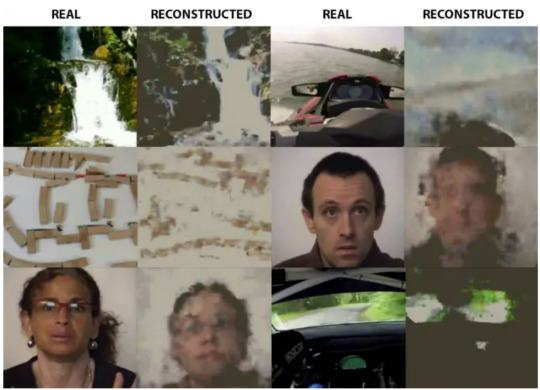
Controlling a video game with your mind isn't just science fiction - Marketplace
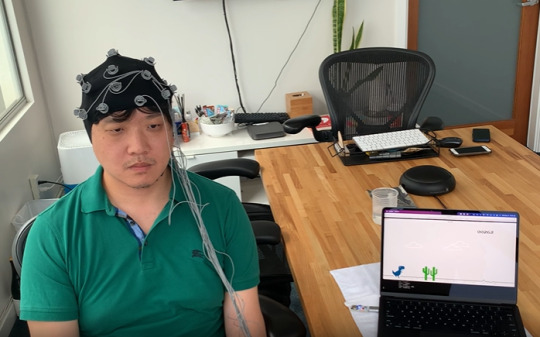
Neural Prosthesis Uses Brain Activity to Decode Speech - Neuroscience News
Snap buys brain-computer interface startup for future AR glasses - The Verge
"Snap said on Wednesday that it has acquired NextMind, the Paris-based neurotech startup behind a headband that lets the wearer control aspects of a computer — like aiming a gun in a video game or unlocking the lock screen of an iPad — with their thoughts. The idea is that NextMind’s technology will eventually be incorporated into future versions of Snap’s Spectacles AR glasses."
“We use your top-down attention as a controller. So when you focalize differentially toward something, you then generate an [intention] of doing so. We don’t decode the intention per se, but we decode the output of the intention.”
Stanford Researchers Develop An Incredible Brain-Computer Interface (BCI) System That Can Convert Speech-Related Neural Activity Into Text At 62 Words Per Minute - MarkTechPost
Brain Computer Interface Company Implants New Type of Device - Bloomberg
"Synchron, the startup behind the technology, has already implanted its devices in four patients in Australia, who haven’t experienced side effects and have been able to carry out such tasks as sending WhatsApp messages and making online purchases."
13 notes
·
View notes
Text
A cyborg is born 1-30-2024
The first human to receive an implant from Neuralink is recovering well, according to Elon Musk, marking the latest milestone for the emerging brain-computer interface industry. BCIs are aimed at helping people with traumatic injuries like paralysis, but if all goes well, Musk hopes to extend this to hearing and vision loss, and eventually merge humans with artificial intelligence. The implants use "ultra-fine" threadlike electrodes to detect and help transmit "neuron spikes," or the electrical and chemical signals in participants' brains.
Quote: "The first @Neuralink product is called Telepathy," Musk wrote on X. "Enables control of your phone or computer, and through them almost any device, just by thinking. Initial users will be those who have lost the use of their limbs. Imagine if Stephen Hawking could communicate faster than a speed typist or auctioneer. That is the goal."
The FDA gave Neuralink approval for clinical trials on humans in May 2023, prompting the company to start recruiting candidates in September. The neurotech firm has already shown success with extensive tests on primates, such as monkeys that have been able to move cursors or play video games like "Pong" using just their brains. Some of Neuralink's activities have been criticized for their surgical work, but the in-human clinical trial marks one step closer toward commercialization, especially for a startup that's reportedly valued at around $5B.
Not the only show in town: The latest development casts another spotlight on Musk's ability to allocate time to his many ventures at the same time as shoring up social platform X and electric vehicle maker Tesla (TSLA). Most of Neuralink's competitors are also not publicly traded, including Synchron, Onward, Precision Neuroscience and Blackrock Neurotech. Where Neuralink stands ahead of the pack is the ability for its device to go deeper into the brain, as well as containing far more electrodes that target individual neurons (instead of groups or clusters), with the aim of offering a higher degree of precision.
2 notes
·
View notes
Text
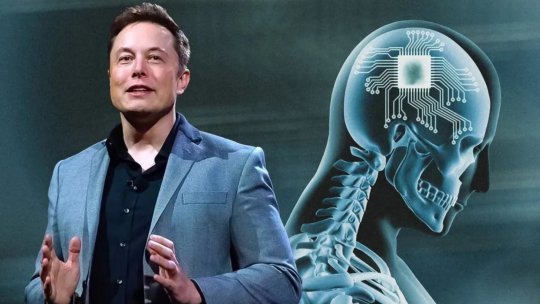
Elon Musk’s Neuralink looking for volunteer to have piece of their skull cut open by robotic surgeon
Elon Musk’s chip implant company Neuralink is looking for its first volunteer who is willing to have a piece of their skull removed so that a robotic surgeon can insert thin wires and electrodes into their brain.
The ideal candidate will be a quadriplegic under the age of 40 who will also for a procedure that involves implanting a chip, which has 1,000 electrodes, into their brain, the company told Bloomberg News.
The interface would enable computer functions to be performed using only thoughts via a “think-and-click” mechanism.
After a surgeon removes a part of the a skull, a 7-foot-tall robot, dubbed “R1,” equipped with cameras, sensors and a needle will push 64 threads into the brain while doing its best to avoid blood vessels, Bloomberg reported.
Each thread, which is around 1/14th the diameter of a strand of human hair, is lined with 16 electrodes that are programmed to gather data about the brain.
The task is assigned to robots since human surgeons would likely not be able to weave the threads into the brain with the precision required to avoid damaging vital tissue.
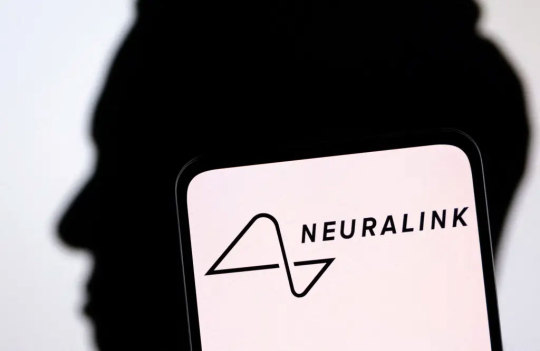
Elon Musk’s brain chip company Neuralink is looking for human volunteers for experimental trials.AP
The electrodes are designed to record neural activity related to movement intention. These neural signals are then decoded by Neuralink computers.
R1 has already performed hundreds of experimental surgeries on pigs, sheep, and monkeys. Animal rights groups have been critical of Neuralink for alleged abuses.
“The last two years have been all about focus on building a human-ready product,” Neuralink co-founder DJ Seo told Bloomberg News.
“It’s time to help an actual human being.”
It is unclear if Neuralink plans to pay the volunteers.
The Post has sought comment from the company.
Those with paralysis due to cervical spinal cord injury or amyotrophic lateral sclerosis may qualify for the study, but the company did not reveal how many participants would be enrolled in the trial, which will take about six years to complete.

Musk’s company is seeking quadriplegics who are okay with their skull being opened so that a wireless brain-computer implant, which has 1,000 electrodes, could be lodged into their brain.REUTERS
Neuralink, which had earlier hoped to receive approval to implant its device in 10 patients, was negotiating a lower number of patients with the Food and Drug Administration (FDA) after the agency raised safety concerns, according to current and former employees.
It is not known how many patients the FDA ultimately approved.
“The short-term goal of the company is to build a generalized brain interface and restore autonomy to those with debilitating neurological conditions and unmet medical needs,” Seo, who also holds the title of vice president for engineering, told Bloomberg.

The brain chip device would be implanted underneath a human skull.
“Then, really, the long-term goal is to have this available for billions of people and unlock human potential and go beyond our biological capabilities.”
Musk has grand ambitions for Neuralink, saying it would facilitate speedy surgical insertions of its chip devices to treat conditions like obesity, autism, depression and schizophrenia.
The goal of the device is to enable a “think-and-click” mechanism allowing people to use computers through their thoughts.Getty Images/iStockphoto
In May, the company said it had received clearance from the FDA for its first-in-human clinical trial, when it was already under federal scrutiny for its handling of animal testing.
Even if the BCI device proves to be safe for human use, it would still potentially take more than a decade for the startup to secure commercial use clearance for it, according to experts.
Source: nypost.com
2 notes
·
View notes
Note
i was just wondering what mkultra is called or known by in more recent years? if you know
The short answer is I don’t know for certain. The government places its programs into subprojects (special access programs, USAP and Sensitive Compartmented Information ) then into specialised fields of research and development at universities, prisons, private laboratories and hospitals.
What I do is look for projects like: Restoring Active Memory (Ram)
Darpa Awards $40 Million To Restore Memories
I then follow the trail:
“According to Department of Defence and National Institutes of Health documents [1][2], University of Pennsylvania neuroscientists affiliated with Nia Therapeutics (Cortera Neurotechnologies) [7] have been implanting hundreds of human test subjects with neurological devices based on wirelessly controlled nanotechnology [13][14][15][16] and conducting wide arrays of experiments on them within the DARPA Restoring Active Memory (RAM) project among other neuroscience related efforts. The high resolution neurological datasets being gathered via these experiments are being privately distributed to researchers at different institutions, often under the guise of epilepsy or brain-computer interface (BCI) research. [12][5][6]
Of the 126 severe epilepsy test subjects [9] implanted with neuromodulation devices and referenced in the available IRB authorizations, no informed consent documentation has been found or is available. Further, all 251 test subjects that the University of Pennsylvania claims to be voluntarily and consensually participating in the Restoring Active Memory project [6] are not referenced in any of the available IRBs. This leaves 125 test subjects with implants unaccounted for in the available documentation even if all aforementioned 126 severe epilepsy patients are active voluntary participants in RAM.
The University of Pennsylvania’s vice provost for research, Dr. Dawn Bonnell, indicated in August of 2019 that the university would “look into” possible unethical or illegal conduct being committed within the scope of UPenn neuroscience related research projects. [11] Subsequent requests for comment or feedback have garnered no response.”
Nia Therapeutics
Then I look for the other companies involved.
Related Companies
Upgrade Your Memory With a Surgically Implanted Chip
“Start-ups” are suspect to me in these sorts of situations. “Start-ups” that have large government contracts are odd.
Oz
17 notes
·
View notes
Text
AI Control Human Brain: why AI Controlling Brain?
Imagine being able to control devices with just your thoughts. It sounds like something out of a science fiction movie, but with advancements in technology, it’s becoming a reality. In this article, we’ll delve into the fascinating world of brain computer interfaces (BCIs) and neurotechnology, exploring how these innovations are allowing us to harness the power of our minds to ai control machines.

Brain computer interfaces (BCIs) are systems that enable direct communication between the brain and an external device, such as a computer or prosthetic limb. The basic idea behind BCIs is to decode the brain’s signals and translate them into commands that can be understood by machines. This allows individuals to interact with technology using nothing but their thoughts.
How BCIs Work:
At the heart of BCIs are sensors that detect brain activity. These sensors can be non-invasive, such as electroencephalography (EEG) electrodes placed on the scalp, or invasive, involving electrodes implanted directly into the brain. Once the brain signals are captured, they are processed by algorithms that decode the user’s intentions. These decoded commands are then used to control various devices or applications.
Applications of BCIs:
BCIs have a wide range of applications, from assisting individuals with disabilities to enhancing human-computer interaction. One of the most well-known applications is in the field of assistive technology, where BCIs enable people with paralysis to control prosthetic limbs or communicate through computers using their thoughts alone. BCIs also hold promise in areas such as gaming, virtual reality, and even neurofeedback therapy for mental health conditions.
Why Is AI Controlling Human Brain?
The idea that AI controls the human brain is not true. Instead, AI and the human brain can work together in helpful ways, but AI doesn’t control our brains. Let’s clear up some points:

AI as a Tool: Scientists use AI to understand and analyze the human brain. They use AI algorithms to make sense of complex brain data. This teamwork helps us learn more about how our brains work and how to treat brain-related issues.
Assistive Technologies: AI can assist people who have trouble moving or thinking. For instance, AI-powered prosthetics or devices that connect to the brain can help them move or communicate better.
Enhancing Performance: Some studies connect AI to living beings to make them better at certain tasks, like finding food. This is done in labs to understand how AI and living things can work together.
The AI Control Problem: Some people in the AI community worry about the “AI control problem.” They want to make sure that AI systems follow human values and stay safe. They’re concerned that AI might become too powerful and unpredictable. Read More
0 notes
Text
Regarding simultaneously both non-fiction and non-imaginary, has a "BCI (Brain-computer Interface) that was implanted in a human and that "was or is/was" connected to that human's brain", but "illegally implanted" due to that human ""never having consented to ever be implanted" nor had that "implanting" ever been authorized by ""anyone nor anything" in any way" to ever be done, nor was that human ever "informed by "anyone nor anything" ""that "himself or herself" had ever been implanted" and "about that implant"""", ever been discovered?

0 notes
Text
Embracing the Future: The Human Augmentation Market
Human augmentation, once a concept relegated to the realms of science fiction, is now a burgeoning reality reshaping the way we live, work, and interact with the world around us. The human augmentation market encompasses a diverse array of technologies and innovations aimed at enhancing human capabilities, from physical performance to cognitive abilities.
At the forefront of human augmentation are advancements in biotechnology, robotics, wearable devices, and augmented reality (AR). Prosthetics equipped with advanced sensors and actuators enable individuals with limb loss to regain mobility and dexterity, restoring independence and quality of life. Similarly, exoskeletons and powered suits augment human strength and endurance, revolutionizing industries such as manufacturing, healthcare, and defense.
Wearable technology is another driving force behind the human augmentation market, with devices ranging from smart glasses and fitness trackers to brain-computer interfaces (BCIs) and implantable sensors. These technologies monitor vital signs, track activity levels, and provide real-time feedback, empowering users to optimize their health, performance, and well-being.
In the realm of cognitive augmentation, AR and virtual reality (VR) technologies are opening new frontiers in education, training, and entertainment. AR overlays digital information onto the physical world, enhancing situational awareness and decision-making in fields such as engineering, medicine, and gaming. Meanwhile, VR immerses users in virtual environments, enabling realistic simulations for training and therapy purposes.
The human augmentation market is driven by a combination of factors, including technological advancements, demographic shifts, and changing societal attitudes toward technology-enhanced human capabilities. As populations age and the prevalence of chronic diseases rises, there is growing demand for assistive technologies and medical interventions to enhance quality of life and mitigate age-related declines.
Ethical and regulatory considerations loom large in the human augmentation landscape, with debates surrounding privacy, consent, and equitable access to technology. As these technologies become more integrated into daily life, it is imperative to address ethical concerns and ensure that human augmentation benefits society as a whole.
In conclusion, the human augmentation market holds immense promise for enhancing human potential and addressing pressing societal challenges. By harnessing the power of technology to augment our abilities, we can unlock new opportunities for innovation, inclusion, and human flourishing in the years to come.
#Human Augmentation#Biotechnology#Wearable Technology#Prosthetics#Augmented Reality#innovation#technology#ai
0 notes